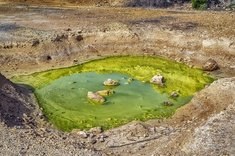Featured Quizzes
User Quizzes
Create Quiz
Data and Charts
Badges and Games
About JetPunk
JetPunk Shop
Dark Mode

Texas Waste Water Treatment Ch#14 Records and Safety Practices
Take the test..... duh.......
Study questions for the class C waste water license.
Info source: TEEX infrastructure training & safety institute waste water treatment resource book Module #14 Records and Safety Practices 2023.
Rate:
Last updated: January 17, 2024
You have not attempted this quiz yet.
More quiz info >>
| First submitted | July 3, 2023 |
| Times taken | 21 |
| Average score | 100.0% | Report this quiz | Report |
5:00
The quiz is paused. You have remaining.
Scoring
You scored / = %
This beats or equals
% of test takers
also scored 100%
The average score is
Your high score is
Your fastest time is
Keep scrolling down for answers and more stats ...
1.
Which of the following types of general information is not typically recorded in plant
records?
Rainfall
✓
Wind direction
✓
Meter readings
✓
None of the above
✓
Plant records should include the following general information: • Temperatures (air, wastewater, sludge) • Rainfall • Wind direction • Meter readings • Sludge handling (raw and digested) • Screening and grit records • Laboratory results, both plant and sludge analysis • Process control results • Operators’ daily logs • Irrigation records (if applicable)
2.
To be of value, lab test results must be ________ recorded.
daily
✓
weekly
✓
annually
✓
permanently
✓
To be of value, laboratory test results must be permanently recorded.
3.
The TCEQ monthly effluent report must be submitted to the TCEQ in Austin by the
________ day of the month following the month being reported.
5th
✓
10th
✓
20th
✓
30th
✓
The TCEQ monthly effluent report must be submitted to the TCEQ in Austin by the 20th day of the month following the month being reported.
4.
Which of the following substances should not be dumped into the collection system?
Acids
✓
Caustics
✓
Chemical fertilizers
✓
All of the above
✓
In the raw waste part of the plant, flammable liquids, such as greases, oils, gasoline, and other petroleum products, present a serious danger. So do toxic substances, such as >acids<, >caustics<, insecticides, >chemical fertilizers<, and cleaning compounds. These substances should not be dumped into the collection system. They will kill the bacteria necessary for wastewater treatment. However, hazardous substances are still found in the system.
5.
All anaerobic digester roofs or covers should be equipped with pressure relief, vacuum
relief, and ________.
valve filters
✓
flame throwers
✓
water-trap valves
✓
flame-trap valves
✓
All digester roofs or covers should be equipped with pressure relief, vacuum relief, and flame-trap valves. A waste-gas flame stack with a manually operated positive drip trap should be connected to the gas dome. No smoking or other combustion can be permitted on the roof or around the gas dome.
6.
Hazardous gases can be composed of which of the following?
Poisonous or toxic gases
✓
Asphyxiation-producing gases
✓
Combustibles and explosive gases
✓
All of the above
✓
During wastewater decomposition, various hazardous gases form in the collection system and in the wastewater plant. They fall into three general classifications: • Combustibles and explosive gases • Asphyxiation-producing gases • Poisonous or toxic gases
7.
In small concentrations hydrogen sulfide has _________ odor.
no
✓
a sweet
✓
a gasoline
✓
a rotten-egg
✓
Hydrogen sulfide, a product of organic decay in wastewater, is heavier than air, colorless, and flammable. In small concentrations it has a rotten-egg odor. Exposure for two to fifteen minutes at 0.01% impairs the sense of smell. Exposure to amounts of 0.07%–0.1% rapidly causes acute poisoning, paralyzing the lungs.
8.
Which of the following describes methane, which is a highly flammable gas that acts to
deprive body tissues of oxygen and will not support life.
Odorless
✓
Tasteless
✓
Colorless
✓
All of the above
✓
Methane is a colorless, odorless, tasteless, and highly flammable gas that deprives body tissues of oxygen and will not support life. Methane constitutes about 65%–75% of digester gas and is explosive at a 5%–15% concentration.
9.
Chlorine is a heavy, non-combustible, ________ gas with a pungent, irritating odor and very low electrical conductivity.
blue
✓
reddish-green
✓
reddish-yellow
✓
greenish-yellow
✓
Chlorine is a heavy, non-combustible, greenish-yellow gas with a pungent, irritating odor and very low electrical conductivity. It is highly toxic as an inhalant and a moderate fire risk in contact with turpentine, ether, ammonia, hydrocarbons, hydrogen, powdered metals, or reducing materials.
10.
________ infections and injuries may be caused by chemicals, insect bites, abrasions, and extreme heat or cold.
Eye
✓
Skin
✓
Pulmonary
✓
Respiratory
✓
No skin break is too small for infection to enter. Skin infections and injuries may be caused by chemicals, insect bites, abrasions, and extreme heat or cold. Cleanliness is the best protection against infection and disease. Even very minor injuries require immediate cleaning and treatment. Washing and showering facilities with hot water and soap are mandatory.
11.
Safety on the job is ________ business.
no one’s
✓
everyone’s
✓
only management’s
✓
mainly the safety officer’s
✓
Safety on the job is everyone's business. Accidents are caused; they don't just happen. Constant alertness and observance of safety practices will help prevent disasters. Emergency telephone numbers should be available to all employees. The ABCs of safety are Always Be Careful!
Comments
No comments yet
New and Popular
Save Your Progress
Texas Waste Water Treatment Study Guide
Quiz series by Mandaris
...
Copyright H Brothers Inc, 2008–2024
Contact Us | Go To Top | View Mobile Site
